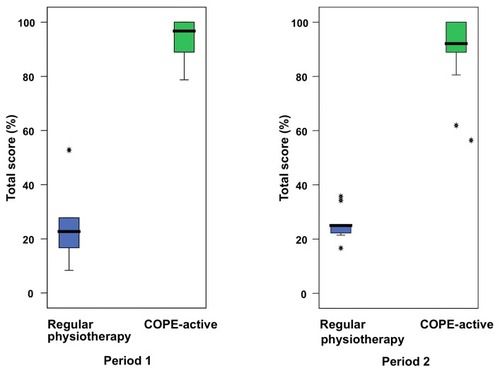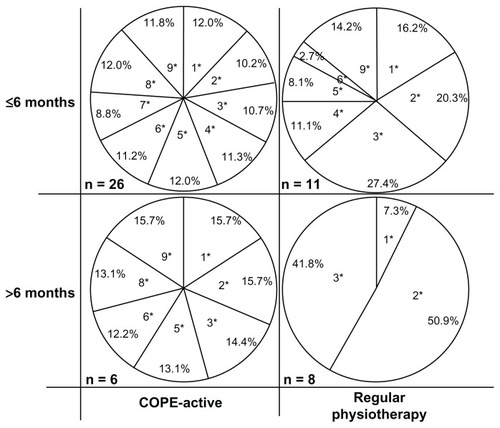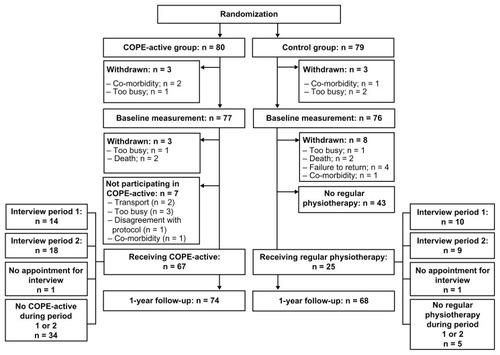Figures & data
Table 1 The nine aspects of the COPE-active program, with number of items per aspect, the score per item, and the maximum score per aspect
Figure 2 The median, 25th and 75th percentile of total scores and outliers (*) of patients receiving regular physiotherapy and COPE-active in two different time periods within the COPE-II study.

Figure 3 Individual patient’s scores of the COPE-active group (○) and the group receiving regular physiotherapy (△) per physiotherapist.

Figure 4 Relative contribution (%) of each of the nine aspects constituting the (mean) COPE-active score, for both the COPE-active patients and those receiving regular physiotherapy.

